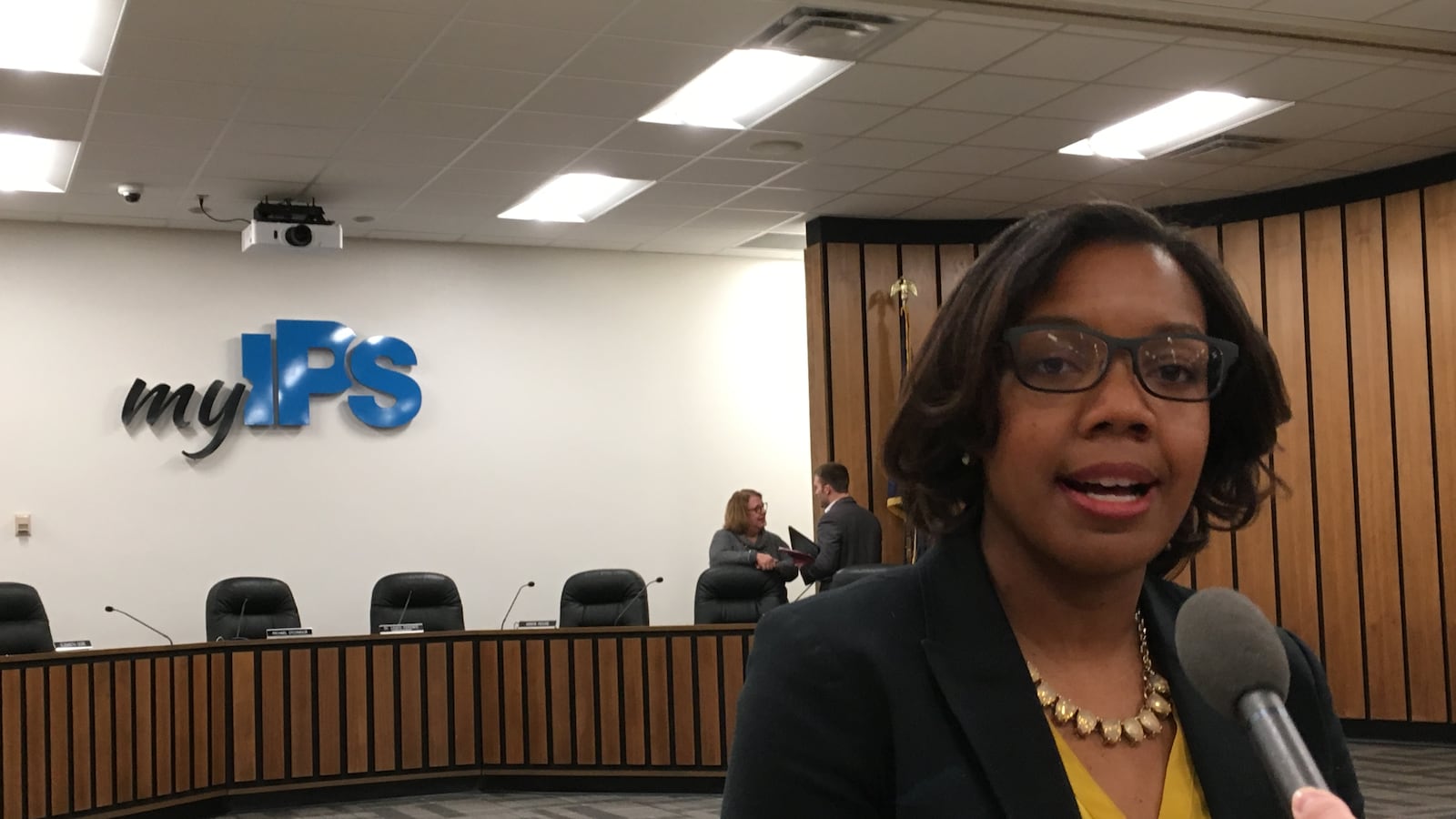Even before she was chosen as interim superintendent last week, Aleesia Johnson was a rising star in Indianapolis Public Schools.
Johnson spearheaded the district’s innovation strategy under departing superintendent Lewis Ferebee, developing controversial partnerships with nonprofit or charter operators and giving schools more freedom.
Her work overseeing innovation schools — sometimes used as a turnaround approach for the most struggling schools — has transformed the district into a more decentralized, hybrid model that has attracted the national spotlight. Because of innovation schools, Indianapolis is widely regarded by reform advocates as a district among the “most inventive and dynamic in the country,” as the Center on Reinventing Public Education put it last year.
Now Johnson, 40, is the first African-American woman to serve as the district’s superintendent, and she appears a likely contender when the district begins its search for a permanent successor to Ferebee.
“I’m under no illusion of the challenges that face our district and the tough decisions that will have to be made,” Johnson said in a district blog post about her appointment.
As deputy superintendent of academics, Johnson has often been a public face of the district, speaking on panels about racial equity in education and forums about the district’s innovation work. Personable and confident, she’s well respected within the district and in Indianapolis education circles, even though her work with innovation schools can be controversial.
As a key leader in Ferebee’s administration, Johnson is closely tied to charter schools and school reform in Indianapolis. A former Teach for America and KIPP Indy leader, she has said she supports the path the district is on, which means she’ll likely have the support of the majority of the school board. Johnson told the Center on Reinventing Public Education that she was drawn to Indianapolis Public Schools in 2015 because she “connected really strongly with the vision the superintendent laid out.”
“She’s had the opportunity to see first-hand some of our strategy and transformation efforts,” Ferebee said Friday.
Under Johnson’s leadership, the district would likely continue to broaden its innovation strategy. A district of some 30,000 students, made up of mostly students of color and from poor families, Indianapolis Public Schools serves about a quarter of its students in 20 innovation schools.
In interviews, Johnson has often touted how innovation schools can move more nimbly than schools that have to wait for district-level changes.
“I think what we’re trying to do is create a third way of thinking — how do you marry empowering schools with flexibility with lots of the resources that are available to schools in a traditional public schools district structure,” Johnson told the Reinventing America’s Schools project, a pro-charter school reform movement led by David Osborne.
It’s hard to make a blanket statement on the performance of innovation schools. Because most of them are less than three years old, many are graded based on the growth of their students alone without taking into account their proficiency levels. Many of the schools have seen early gains in passing rates on state tests.
Johnson has been upfront about the challenges of the innovation strategy. In the book “Reinventing America’s Schools,” Osborne wrote that she acknowledges “constant problems to be worked out,” such as funding to support innovation schools and uprooting teachers when schools convert to innovation.
“It’s never, ‘No, we can’t do that,’” she said in the book. “It’s, ‘Oh, we’ve never done that, so let’s talk about it and figure out how to get it done.’”
In an interview with the local Indy Education blog, Johnson said she invites critics to see the changes strong leaders can make in innovation schools.
She also said innovation can allow community members to feel like they have ownership of the schools in their neighborhood: “I see this work as an incredible opportunity for there to be, unlike ever before, a much stronger community voice, much stronger way for parents to interact and engage in their schools.”
Still, Johnson was careful to note Friday that she won’t be a carbon-copy of her former boss, who has both won the hearts of many national reformers and rankled community members with the dramatic changes to the district. “I think obviously I am a different leader,” she said.
She won’t be immune to criticism. The IPS Community Coalition, a grassroots group that is critical of innovation schools, posted on Facebook about Johnson’s appointment to interim superintendent: “Although that is a great milestone for IPS in terms of equity and diversity, we have continued concern about the IPS agenda. The statement this appointment makes about pushing innovation schools and charter ‘choices’ on poor, and black and brown students is concerning — as charters have not proved to be more effective, nor equitable in their treatment of students.”
Others, though, including school board members, have heralded her appointment. Andrew Pillow, a teacher who worked with Johnson at KIPP Indy, wrote on the Indy K12 blog that Johnson is “infinitely qualified and the perfect choice to lead Indianapolis Public Schools.”
So far, Johnson has said she will wait until the school board decides the superintendent search process to say whether she’s throwing her hat in the ring to lead the district long-term.
Asked again in her first television interview as interim superintendent this week, she said, “We shall see.”
Correction: Jan. 4, 2019: A previous version of this story identified the Indy K12 blog under its former name, Indy Education.

